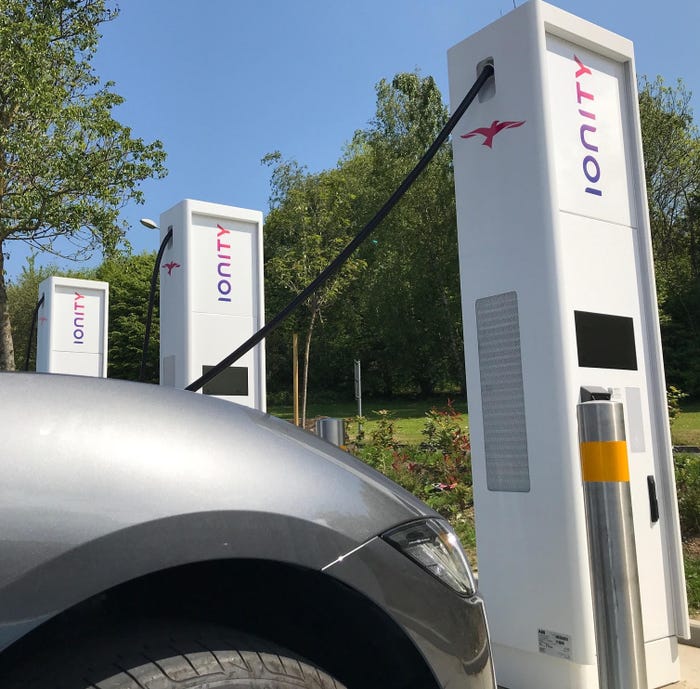April 1, 2011


A new universal light source could be the lynchpin enabling light-emitting-diode technology to fulfill expectations and corner a significant share of headlamp applications in even mid-priced vehicles, supplier Osram Sylvania says.
LEDs, long billed as the next big thing in forward and rear signal lighting, have seen only limited application so far.
Just a handful of luxury models, the Audi A8 and R8, Lexus LS 600h and top-line Toyota Prius among them, employ LED headlamps.
Application in taillamps is becoming more ubiquitous as auto makers seek the styling panache the technology offers. But even here, LEDs are found on less than 20% of the new vehicles offered in the U.S., Osram estimates.
Cost and the custom-design requirements of current pixilated LED systems have held back the technology from further growth in the signal-lighting arena, says David Hulick, Osram marketing director-specialty solid state lighting. Cost is the main barrier for headlamp applications too, he adds.
But Osram’s Joule-branded line of single-source LED lighting, which is designed to be as interchangeable from one vehicle to another as a conventional headlamp or taillight wedge bulb, has the executive convinced a new era is about to begin.
“A lot of things are happening (in automotive lighting),” Hulick tells Ward’s. “And the face of this industry is going to change.”
Osram predicts by 2020, one in four cars worldwide will have LED headlamps, while half of all vehicles will use LEDs for rear signal lighting.

VW’s high-mileage XL1 concept uses Osram’s LED system in its low-profile headlamps.
The standardized Joule forward-light source looks like a small hockey puck, measuring about 2 ins. (50 mm) in diameter and a half inch (12 mm) thick, with an array of 0.04-in. (1-mm) square high-brightness LED chips in the middle.
Its first use was in dealer-installed fog lights for some Mitsubishi models sold in Asian markets, but its initial OE application will come in daytime running lights for an upcoming vehicle due in the next 12 months from a U.S. auto maker, Hulick says.
Additional use as the primary headlamp will come in short order, he predicts, as auto makers get comfortable with the more affordable Joule technology and are drawn to the durability and design-flexibility benefits LEDs offer compared with more conventional bulbs.
Osram long has been predicting that one day LEDs would replace even high-end, high-intensity discharge (or Xenon) lamps, expected to be available on 38% of new vehicles by 2015, as the premium lighting option for new-car buyers. Hulick still expects that to happen, though he admits LED technology needs further development to be fully competitive with HID headlamps.

Osram’s universal LED system for forward lighting.
“We don’t have as much punch (brightness) as HIDs yet,” he says. “That will come in time.”
But because LEDs are more energy-efficient, the Osram’s Joule system also could be an affordable option for auto makers to use in forward lighting for electric vehicles and other high-mileage cars. Volkswagen employed Osram’s Joule technology in the headlamps for its recently unveiled XL1 concept, considered a “1L car” because it is designed to deliver 235 mpg (1 L/100 km).
The Osram LED system draws 14 watts of electricity, while a halogen bulb requires 65 watts. “So we’re giving better than halogen performance for 14 watts compared to 65,” Hulick says. “It’s going to make a difference in battery-electric vehicles, where (engineers are) counting every watt.”
The biggest roadblock to a widespread LED movement is the incandescent bulb.
“The old technology works,” he says of the conventional automotive wedge bulb. “It is reliable (and) durable. It does everything it should. No one is out there saying, ‘I have a problem with this, you’ve got to do something.’”
Re-engineering a vehicle’s forward lighting systems to accommodate the new LED technology “is not an easy, low-effort transition,” Hulick admits. “I would say it is a challenge to do this.”
But the plug-and-play design of Osram’s Joule device means once the initial work is done, broadening application across vehicle lines and platforms would be a relative snap. Current LED technology requires a more model-specific engineering approach.
“As the technology matures, I think you use it as a product differentiator,” Hulick says. “For the American producers, that’s really important. How do you get someone out of the V-6 Mustang and into the (higher priced and more profitable) GT? What features are going to appeal to people that are visible and tangible? Lighting is one of the things that produce this effect.”
OSRAM has been following a similar tact for the past few years with rear signal lamps, using another universal light source it developed about eight years ago. Its initial application was on the Mercury Mountaineer, but it is now employed on several models, including the Ford Mustang and Chevrolet Malibu.
The OSRAM technology uses a higher-powered single LED light source that sits behind a stylized, molded-plastic light guide. Current taillight treatments consist of a custom-designed circuit board with an expensive array of tiny LEDs.
Osram says consumers would pay about $174 to replace its Joule signal-lighting system if damaged in an accident. That compares with $131 for today’s incandescent assemblies and $299 for LED array assemblies.
“A standardized, off-the-shelf part as the engine (of the light system) could be more attractive (for lower-cost vehicles),” Hulick says. “That’s where we think the market is headed.”
– with Drew Winter
About the Author
You May Also Like



.jpg?width=700&auto=webp&quality=80&disable=upscale)